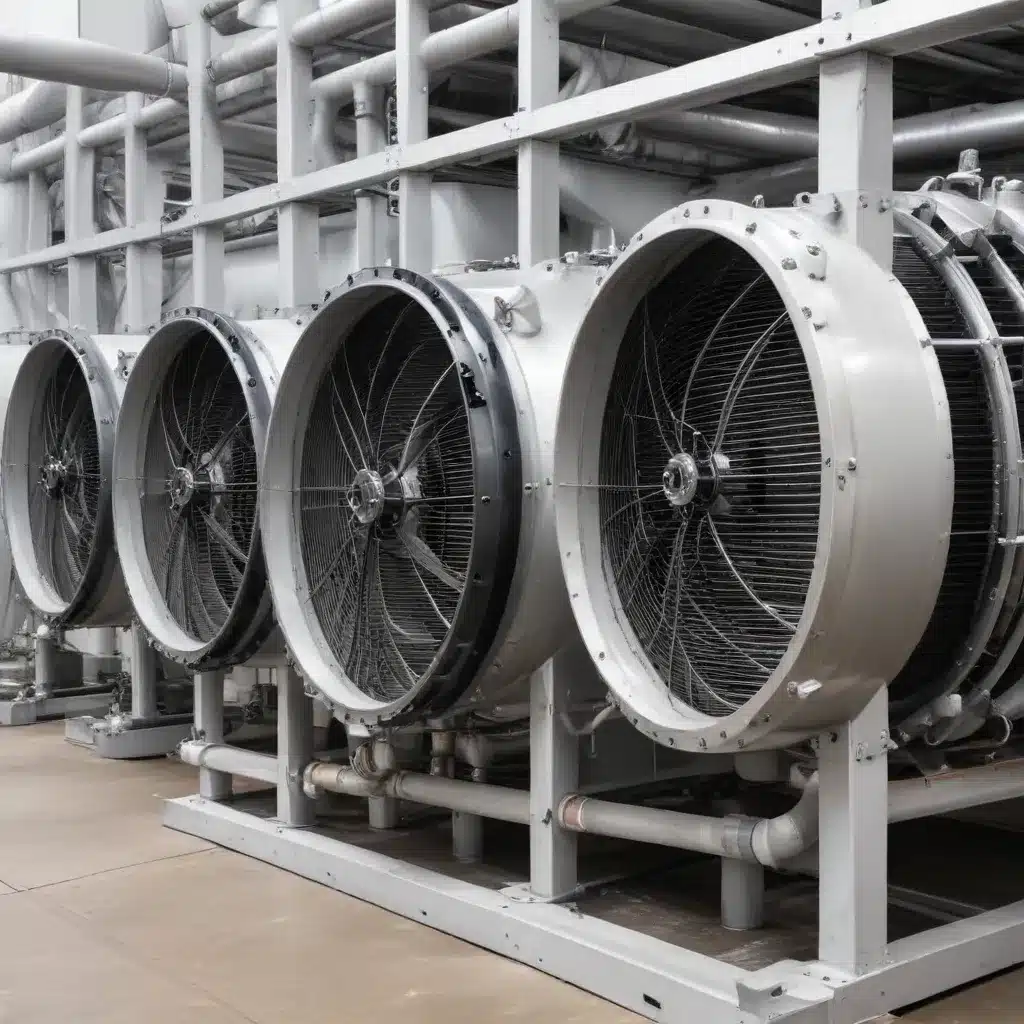
The Importance of Condition Monitoring in Air-Cooled Heat Exchanger Applications
Air-cooled heat exchangers play a crucial role in a wide range of industries, from oil and gas to power generation and beyond. These robust, reliable systems are designed to transfer heat efficiently, ensuring optimal performance and minimizing downtime. However, as with any critical equipment, maintaining the health and longevity of air-cooled heat exchangers requires a comprehensive condition monitoring strategy.
Effective condition monitoring allows plant operators to track the performance and integrity of their heat exchangers, proactively addressing issues before they escalate into costly failures. By deploying advanced monitoring techniques, facilities can enhance operational efficiency, reduce maintenance costs, and extend the lifespan of their air-cooled heat exchanger assets.
Leveraging Predictive Maintenance Strategies
Adopting a predictive maintenance approach is essential for maximizing the reliability of air-cooled heat exchangers. Predictive maintenance focuses on monitoring the condition of equipment and identifying potential issues before they lead to failures, enabling timely and targeted interventions. This strategic approach contrasts with traditional reactive or time-based maintenance, which often results in unnecessary downtime and higher maintenance costs.
At the heart of a successful predictive maintenance program for air-cooled heat exchangers are advanced condition monitoring techniques. These techniques leverage a range of data sources, including sensor data, operational parameters, and maintenance records, to provide a comprehensive view of the equipment’s health.
Comprehensive Condition Monitoring Solutions
Comprehensive condition monitoring for air-cooled heat exchangers typically involves a combination of the following techniques:
Vibration Analysis
Vibration analysis is a powerful tool for detecting and diagnosing mechanical issues in air-cooled heat exchangers. By monitoring the vibration patterns of critical components, such as fans, bearings, and rotating assemblies, maintenance teams can identify early signs of wear, imbalance, or structural problems. Trends in vibration data can help predict the remaining useful life of components and guide proactive maintenance actions.
Infrared Thermography
Infrared thermography, or thermal imaging, is a non-invasive technique used to detect and analyze temperature changes in air-cooled heat exchanger systems. By identifying hot spots, cold spots, and other thermal anomalies, maintenance teams can identify issues such as fouling, air flow restrictions, or failing components before they lead to performance degradation or equipment failure.
Oil Analysis
Monitoring the condition of lubricating oils in air-cooled heat exchanger components, such as gear boxes and bearings, can provide valuable insights into the overall health of the system. Oil analysis can detect the presence of contaminants, wear particles, and changes in oil properties, enabling timely interventions to prevent costly failures.
Ultrasound Monitoring
Ultrasound monitoring is particularly useful for detecting leaks, cavitation, and other high-frequency issues in air-cooled heat exchangers. By listening for the unique acoustic signatures of these problems, maintenance teams can identify and address issues before they become more severe.
Motor Circuit Analysis
For air-cooled heat exchangers with electric motor-driven components, such as fans, motor circuit analysis can provide valuable information about the condition of the motor windings, bearings, and other critical electrical systems. This technique can help predict impending motor failures and guide proactive maintenance actions.
Operational Data Analysis
Analyzing operational data, such as air flow, tube flow, fan power, and overall system performance, can help identify trends and deviations that signal the need for maintenance or equipment upgrades. By monitoring these key performance indicators, maintenance teams can optimize the efficiency and reliability of their air-cooled heat exchangers.
Integrating Condition Monitoring into a Comprehensive Maintenance Strategy
To maximize the benefits of condition monitoring for air-cooled heat exchangers, it is essential to integrate these techniques into a comprehensive maintenance strategy. This approach involves not only collecting and analyzing data from various sources but also using that information to drive targeted, risk-based maintenance decisions.
One such integrated solution is Allied Reliability’s SmartCBM platform, which combines predictive maintenance technologies, process data, statistical process control, and data analytics to provide a holistic view of equipment health. This platform leverages a proprietary failure mode library, derived from analyzing millions of components, to identify common failure modes and inspection methods for air-cooled heat exchangers and other critical assets.
By integrating condition monitoring data into a centralized platform, maintenance teams can gain a deeper understanding of their air-cooled heat exchanger performance, identify risks and potential failures, and implement proactive maintenance strategies to enhance reliability and availability.
Addressing Challenges in Air-Cooled Heat Exchanger Applications
Air-cooled heat exchangers often operate in challenging environments, where factors such as high temperatures, corrosive atmospheres, and heavy particulate loads can compromise their performance and reliability. Addressing these challenges requires specialized design, materials, and maintenance approaches.
Corrosion Resistance: For applications with high levels of hydrogen sulfide (H2S) or carbon dioxide (CO2), air-cooled heat exchangers must be constructed using advanced, corrosion-resistant alloys, such as Incoloy 825. These specialized materials and their associated welding techniques demand expert engineering and fabrication to ensure long-term durability.
High Pressure Considerations: When air-cooled heat exchangers operate at very high pressures, the design, materials, and manufacturing processes must be carefully adapted to the specific gas characteristics. Welding of complex parts and various thicknesses requires extreme precision to avoid material stresses and ensure uniform cooling.
Performance Optimization: Maintaining optimal performance in air-cooled heat exchangers involves regular monitoring and data collection on air flow, tube flow, fan power, and overall equipment status. By analyzing this data, maintenance teams can identify opportunities for upgrades or modifications to increase capacity and efficiency.
Embracing the Future of Air-Cooled Heat Exchanger Reliability
As the demand for efficient and reliable air-cooled heat exchanger systems continues to grow, the integration of advanced condition monitoring techniques will be crucial for maintaining peak performance and minimizing downtime. By leveraging the power of data-driven predictive maintenance, plant operators can stay ahead of potential issues, extend the lifespan of their assets, and optimize their overall operational efficiency.
The Air Cooled Heat Exchangers blog is dedicated to providing industry professionals with the latest insights, practical tips, and in-depth engineering knowledge to enhance the reliability and performance of their air-cooled heat exchanger systems. Stay tuned for more informative articles on this critical technology.

